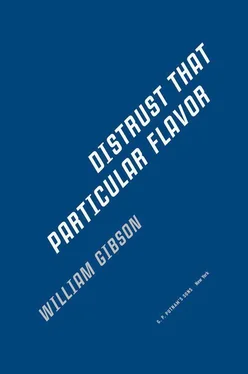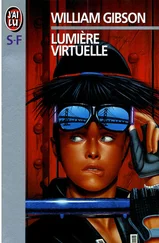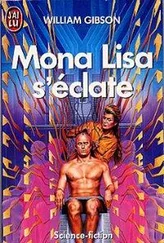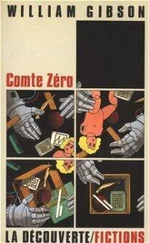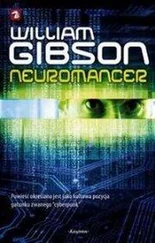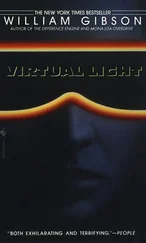The first watch I bought was a Croton Aquamedico, a rarish — or obscure, depending on how you look at it — Swiss manual-wind from the late Forties or early Fifties, black dial with a white medical chapter ring. (Getting the terminology down was a big part of the kick, for me; a medical chapter ring is an outer, 60-second set of graduations that facilitate taking a patient’s pulse.) It had been listed by a seller who didn’t seem to be particularly into watches; the language of the listing was casual, nonspecialist, and not much mention was made of the watch’s condition. E-mail to the seller elicited the opinion that the watch looked as though “it hadn’t been worn very often,” which I liked. The scan was intriguingly low-rez, but I really liked the design of the numerals. And I really liked its name, Aquamedico, which for some reason evoked for me the back pages, circa 1956, of Field & Stream and True .
Tentatively (but compulsively) I placed a low bid and waited to see if the Aquamedico attracted much attention from the eBay watch buffs. It didn’t.
In the meantime, I determined that Croton was a long-established Swiss maker whose watches had been a lot more prominent in the United States in the Forties and Fifties. Full-page ads in wartime Fortune .
I decided to go for it. To try and buy this thing. To import a unique object, physically, out of cyberspace. Well, out of Pennsylvania, actually, but I did experience this peculiar yearning to turn the not-so-clear scan on my screen into a physical object on my desk. And for all I knew, it might be the only Croton Aquamedico left, anywhere. (And in fact I’ve only ever seen one other Aquamedico since on eBay, and it was gold-filled with a white dial, neither of which I liked as much.)
On the night of the auction, after having carefully considered bidding strategy (and this with no prior experience of bidding in any kind of auction), I placed a bid for considerably less than the two-hundred-dollar limit I’d set for myself.
That put me in high-bidder position. And then I sat there.
What if, it occurred to me, someone noticed my Croton in the auction’s last few minutes and decided to grab it? eBay’s system of proxy bidding encourages buyers to offer the most they’re willing to pay for an item — their “maximum” bid. My maximum bid was a hundred and forty dollars. But on eBay you don’t necessarily end up having to pay your maximum bid. In an auction house, if you raised your hand to bid two hundred dollars on a watch, you’d be on the hook for that amount. But on eBay, each auction has a set “bid increment”—with some as little as five cents. With a two-dollar set bid increment, a rival could bid two hundred dollars on my watch, beat me out, and end up having to pay only a hundred forty-two dollars, or two dollars over my maximum.
I started to get nervous. (And this, mind you, was before I even knew about sniping software and autobid bots.) What if someone else got this watch, this watch I’d never seen but which I now, somehow, was emotionally invested in winning? I began to have some sense of the power of the psychology of auctions, something I hadn’t really experienced before.
I’m not a gambler. I’ve never put money on a horse, bought a lottery ticket, or bet on a hand of cards. Just doesn’t do it for me. I’ve engaged in compulsive risk-taking behavior, certainly, but not the kind involving games of chance. But here, I recognized, I was starting to experience a buzz that I suspected was very much like a gambling buzz.
And what if, I asked myself, the Croton was really not all that desirable an object, a lemon, something a serious watch-nerd would find laughable?
What if the seller simply cashed my money order and did a runner? But I’d already checked his profile in the Feedback Forum, and there were lots of people on record there as saying he was honest, prompt, goods as described, and pleasant to deal with. (All of which turned out to be true.)
Meanwhile, with less than an hour to go before the auction closed, I was robotically punching the Netscape Reload button like a bandit-cranking Vegas granny, in case somebody outbid me. I knew how long it would take me to counterbid (not long), but I didn’t know how quickly I could expect the server to process my bid.
Into the final countdown, nobody else showing up, when one more click on the Reload button produced… a new high bidder! Galvanized, I scrambled frantically through the bid process, and hit Bid. Real heart-in-mouth stuff, this. And, I must say, really fun.
Reload. And I was back, reinstated.
The auction closed.
The Aquamedico was mine.
I examined the address of the buyer who’d tried to outbid me at the last minute. An “hk” suggested that he was out of Hong Kong, which I already knew to be a hotbed of serious vintage-watch action. (The day before, I had found a wonderfully bizarre site in Taiwan, a sort of micro wrecker’s yard, exclusively devoted to selling parts of Rolex watches: cases, dials, hands, etc.) I loved it that this Hong Kong bidder had popped in at the last minute, hoping to scoop what he, with his no doubt very considerable watch-savvy, knew to be an extremely desirable piece. But I had been there, ready, and I had prevailed.
I e-mailed the seller, sending my physical address and asking for his.
In the morning, I went out to buy a postal money order, the standard medium of exchange on eBay.
When the Aquamedico arrived, however, I was dismayed to find that it was peculiarly small, probably a “boy’s” watch. I went back to its page on eBay and noted that, yes, it was indeed described as being a 30 mm watch. But the scan was larger than the watch itself, and I had assumed that 30 mm was standard (36 mm is actually closer to the contemporary men’s standard). And while the steel case was very nearly mint, even better than the description, the crystal was in such rough shape that it was impossible to get a clear idea of the condition of the dial and hands. It had arrived from cyberspace, but it didn’t really look like the scan. It looked as though it had been sitting in a sock drawer, somewhere in Pennsylvania, for fortysome years. Which it probably had.
But the seller’s performance had been excellent, so I added my own note of positive feedback to his profile, and he gave me one in turn.
I took the Aquamedico to Otto Friedl, elite specialist in the care of vintage Swiss Tamagotchis, down in the lower lobby of the Hotel Vancouver, and asked to have it cleaned, lubricated, and the crystal replaced. When I went back for it, I discovered that it was a beautiful object indeed, the black dial immaculate, virtu intact.
But it wasn’t “the watch.”
I told myself that there wasn’t any “the watch,” and that I had simply found my own way, after avoiding it for years, of compulsively wasting time on the Net.
But I kept doing it. Opening that same bookmark and clicking down through pages and pages of watches. Learning to read a restricted code. And there was everything, really: Swatches (which are collected like Barbies), the same battered Gruens you would see gathering dust in a Kansas City pawnshop, every sort and vintage of Rolex, wartime Omegas with the British broad arrow stamped into the case back, German Sinn chronographs that you aren’t really supposed to be able to buy here, Spiro Agnew campaign watches…
And bidding. I’d bid a few times per week and was usually content to let myself be outbid. But I did buy another watch, from London, an oddly named Tweka with a two-tone copper dial. It went for around a hundred fifty dollars and had been listed as “NOS,” which means new old stock, something that supposedly has sat in the back of a jeweler’s drawer since 1952. Very nice, after a trip to Otto, but still not the watch…
Читать дальше
